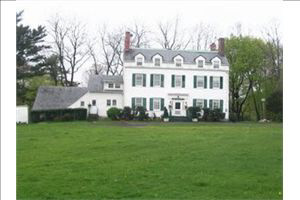Lowball 6/25 - 7/22 (McGreevy Edition)
The purpose of Lowball! is to show buyers that the market has changed and buyers now have considerably more leverage than sellers. Just a short time ago, Lowball! offers would have been laughed at and discarded, however, not any more. The fact that so many under-asking offers are being accepted is clear proof that the market is changing.The list does not contain all sales, I hand-pick the most interesting sales from the list. These listings might be the highest dollar drops, biggest percentage reductions, or sales in towns that are thought to still be 'hot'. Please note, even with double digit percentage reductions, these homes are still incredibly overpriced.
We're going to break the list up by county this time:
Bergen County
MLS# 2234107 - Franklin Lakes, NJ
List Price $1,200,000
Sales Price $990,000 (17.5% Lowball)
MLS# 2258689 - Oakland, NJ
List Price $359,000
Sales Price $310,000 (13.6% Lowball)
MLS# 2230388 - Rochelle Park, NJ
List Price $699,000
Sales Price $612,500 (12.4% Lowball)
MLS# 2261027 - Waldwick, NJ
Original List Price $629,000
List Price $589,000
Sales Price $525,000 (10.9% Lowball, 16.5% off OLP)
MLS# 2224433 - Mahwah, NJ
Original List Price $1,399,000
List Price $1,299,000
Sales Price $1,160,000 (10.7% Lowball, 17.1% off OLP)
MLS# 2255102 - Mahwah, NJ
Original List Price $589,900
List Price $569,900
Sales Price $515,000 (9.6% Lowball, 12.7% off OLP)
MLS# 2248953 - Glen Rock, NJ
Original List Price $869,999
List Price $789,900
Sales Price $715,000 (9.5% Lowball, 17.8% off OLP)
MLS# 2222397 - Ridgewood, NJ
Original List Price $1,450,000
List Price $1,275,000
Sales Price $1,162,500 (8.8% Lowball, 19.8% off OLP)
Essex County
MLS# 2259117 - Belleville, NJ
List Price $299,900
Sales Price $225,000 (25% Lowball)
MLS# 2244511 - North Caldwell, NJ
List Price $2,325,000
Sales Price $1,900,000 (18.3% Lowball)
MLS# 2223354 - Belleville, NJ
List Price $575,000
Sales Price $490,000 (14.8% Lowball)
MLS# 2244141 - Fairfield, NJ
List Price $499,900
Sales Price $430,000 (14% Lowball)
MLS# 2256643 - Verona, NJ
List Price $599,900
Sales Price $527,500 (12.1% Lowball)
MLS# 2233491 - Millburn, NJ
Original List Price $4,860,000
List Price $4,595,000
Sales Price $4,100,000 (10.8% Lowball, 15.6% off OLP)
MLS# 2233910 - Millburn, NJ
List Price $2,999,000
Sales Price $2,688,000 (10.4% Lowball)
MLS# 2213205 - Millburn, NJ
Original List Price $1,319,000
List Price $1,275,000
Sales Price $1,155,000 (9.4% Lowball, 12.4% off OLP)
Morris County
MLS# 2268409 - Madison, NJ
Original List Price $509,000
List Price $495,000
Sales Price $375,000 (24.2% Lowball, 26.3% off OLP)
MLS# 2285379 - Montville, NJ
List Price $1,188,800
Sales Price $999,900 (15.9% Lowball)
MLS# 2270090 - Jefferson, NJ
List Price $225,000
Sales Price $190,000 (15.6% Lowball)
MLS# 2085328 - Florham Park, NJ
List Price $1,345,000
Sales Price $1,150,000 (14.5% Lowball)
MLS# 2264495 - Morristown, NJ
List Price $684,900
Sales Price $587,000 (14.3% Lowball)
MLS# 2201071 - Chatham, NJ
List Price $1,100,000
Sales Price $950,000 (13.6% Lowball)
MLS# 2233288 - Kinnelon, NJ
List Price $1,249,900
Sales Price $1,087,500 (12.9% Lowball)
MLS# 2103717 - Montville, NJ
Original List Price $1,194,800
List Price $1,134,800
Sales Price $995,000 (11.9% Lowball, 21.3% off OLP)
Union County
MLS# 2028729 - Linden, NJ
List Price $320,000
Sales Price $223,500 (30.2% Lowball)
MLS# 2268476 - Plainfield, NJ
List Price $350,000
Sales Price $250,000 (28.6% Lowball)
MLS# 2256843 - Westfield, NJ
List Price $1,799,000
Sales Price $1,450,000 (19.4% Lowball)
MLS# 2267689 - Rahway, NJ
List Price $349,000
Sales Price $286,150 (18% Lowball)
MLS# 2229396 - Roselle, NJ
List Price $224,900
Sales Price $190,000 (15.5% Lowball)
MLS# 2262774 - Fanwood, NJ
List Price $399,900
Sales Price $345,000 (13.7% Lowball)
MLS# 2239900 - Mountainside, NJ
List Price $499,900
Sales Price $435,000 (13% Lowball)
----------------------------------------
I'm sure, at this point, everyone is wondering why this edition of Lowball! was named "McGreevy Edition". It seems our ex-Governor has made the Lowball! list this week with his recent purchase in Plainfield, NJ:
MLS# 2281925 - Plainfield, NJ
List Price $1,475,000
Sales Price $1,300,000 (11.9% Lowball)

I can't say I cared too much for McGreevy as a politician, but I've got to respect the guy for lowballing.
More counties will be posted tomorrow!
Caveat Emptor!
Grim


